book review: In the Margins
Posted by Amy Steele in Books on March 20, 2022
In the Margins: On the Pleasures of Reading and Writing by Elena Ferrante
Europa Editions | $20.00 | Hardback | 9781609457372 | 176 pages | March 15, 2022
If you are a fan of Elena Ferrante, this is the book for you. If you’re wondering about the Ferrante hype, this is also the book for you. In the Margins originated as a series of lectures Ferrante gave at the University of Bologna. She discusses her work as a writer, including her technique, her influences and her struggles. Writers will be inspired by these essays. Writing is hard work, it can be frustrating but it’s worth the struggles in the end. Writing has an inherent power to connect, to educate, to comfort. You’ll want to spend time absorbing these essays.
I might be the only reader who hasn’t yet read all of the “Neapolitan novels.” I liked My Brilliant Friend but wasn’t blown away at the time. I do want to circle back to the others. I have become a fan through her other works. I quite liked The Lost Daughter. It’s a dark, honest and thoughtful novel about the challenges of being a mother. In anticipation of this essay collection, I recently read Incidental Inventions, essays Elena Ferrante wrote as a columnist for The Guardian. The topics covered include feminism, friendship, motherhood, writing, insomnia, addictions, nationalism, death and the recent film adaptation of The Lost Daughter—“I’m attached to that book in a particular way. I know that, with it, I ventured into dangerous waters without a life preserver.”
Like many successful writers, Ferrante is an avid reader and she started writing at a young age. She amasses journals filled with her stories and thoughts. Discussing her youth, she said: “I read a lot, but what I liked was almost never written by women. It seemed to me that the voice of men came from the pages and that voice preoccupied me, I tried in every way to imitate it.” She discusses the writing of Emily Dickinson, Virginia Woolf, Gertrude Stein and Dante, among others.
In her writing, Ferrante doesn’t hesitate to show the underbelly of humanity, the darkness. That makes her writing so strong and appealing. She explains: “Anyone who has literary ambitions knows that the motivations, both great and small, that impel the hand to write come from “real life”: the yearning to describe the pain of love, the pain of living, the anguish of death; the need to straighten the world that is all crooked; the search for a new morality that will reshape us; the urgency to give voice to the humble, to strip away power and its atrocities; the need to prophesy disasters but also to design happy worlds to come from there.” She said: “Beautiful writing becomes beautiful when it loses its harmony and has the desperate power of the ugly. And characters? I feel they are false when they exhibit clear coherence and I become passionate about them and do the opposite.”
Thank you to Europa for sending a copy.
book review: Policing the City
Posted by Amy Steele in Books on March 2, 2022
Policing the City by Didier Fassin, Frederic Dubomy, Jake Raynal
Other Press, March 1, 2022. 112 p.
Academic reports can be dry and difficult to absorb by those who aren’t in academia. Adapted from the essay ‘Enforcing Order,’ this ethnographic presents information in a thoughtful, accessible and creative format. It’s a fascinating exploration of law and order.
What is ethnography? Ethnography is a three-pronged social science practice. First, it involves sharing the everyday lives of those people studied over a long period of time. Second, the ethnographer establishes relationships and gradually makes discoveries, interfering as little as possible in the outcomes. Finally, it’s a writing practice that may take the form of articles , books, films, photographs to communicate their findings.
Anthropologist and sociologist Didier Fassin spent 15 months in the mid-2000s observing an anti-crime squad in one of the largest precincts in the Paris region. The French people face many of the same challenges as those in the United States, particularly racism and police brutality against immigrants and minorities. Fassin wanted to understand the violence in these working-class, largely immigrant suburbs—“But more, perhaps, than the number of deaths, it is the police’s daily harassment of low-income groups and racial minorities and hence the experience of humiliation, discrimination, and violence, that leave the deepest marks in these communities.”
Not only an academic, Fassin had first-hand experience as a resident of this urban community. His son was targeted by the police. In Policing the City, we see everyday routine and rituals and how police departments sustain prejudices and systemic violence against these communities. Fassin found that the police believe that judges can be too lenient and on-street punishment compensates for that. Police officers operate like vigilantes. Eight out of 10 officers were from rural areas or small towns with little experience in urban areas, leading to prejudices and leads to tensions and clashes between the police and residents of housing projects. He also observed that police have been given a lot of power and autonomy. This development led to more anti-crime squads throughout France. There needs to be greater diversity in police recruitment. In the UK, unarmed beat officers become integrated into the community. In the United States, an armed officer patrolling in a car with a limited relationship with the public is the norm. That’s the established model most everywhere worldwide.
Best Books of 2021
Posted by Amy Steele in Uncategorized on January 26, 2022

I Love You But I’ve Chosen Darkness by Claire Faye Watkins
Riverhead Books, October 2021. 304 pg.
Unique, strange, dark, smart. Just the type of novel I like. The main character is a writer suffering from postpartum depression who questions her writing career, her marriage and being a mother. Honest depictions of ambivalent mothers (see also: The Lost Daughter by Elena Ferrante) definitely divides readers.. I’m not a mother and never will be. This woman left her newborn to go to a book event. She’s not particularly interested in being married or in a monogamous relationship either. She grew up in this area outside Las Vegas so she’s revisiting past traumatic experiences. Her mother died of a drug overdose and her father was in the Manson Family. There’s a lot going on and Watkins weaves it all together brilliantly.
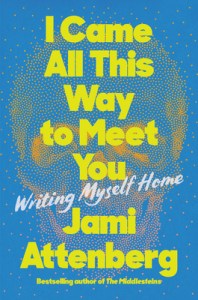
I Came All This Way to Meet You by Jami Attenberg
Ecco, January 2022.
This was everything I want in a memoir: relatable, honest, interesting, complicated, revealing. Jami Attenberg is one of my favorite authors and I appreciated learning more about her writing career and personal life. She’s lived in so many cool places and done lots of traveling; basically she’s done all the things I thought I’d do by my age.
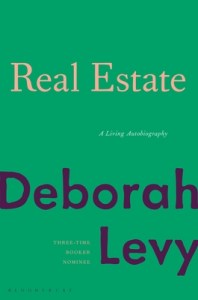
Real Estate by Deborah Levy
Bloomsbury, August 2021. 224 pg.
I don’t know how I expected to have any sort of writing success when I’ve become so limited by my anxiety. I’m terribly agoraphobic. I’ve hardly traveled. I don’t have enough experience. I don’t have my own place. I barely have a room of my own to write in. I’m terribly agoraphobic. I’m envious of anyone who manages to have these things because I don’t think I ever will. Of course, that’s what’s supposed to happen as an adult, isn’t it? Booker-nominated writer Deborah Levy didn’t get recognition until she was 50. Real Estate, the third installment of the Living Autobiography series, is my favorite. It’s very journal-like in her recollection of events and chronicling her thoughts. She has a new rented writing shed in someone’s backyard. Levy contemplates place, ownership, independence, writing, aging, feminism. She travels to New York, Mumbai, Greece and Germany. She lives in Paris for a year on a writing fellowship. She references literature and film: May Sarton’s journals, the Bergman film Through a Glass Darkly, Little Women, Simone de Beauvoir, the television show Feud, Audre Lorde, Gloria Steinem, Leonard Cohen.
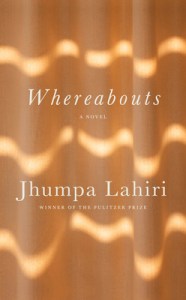
Whereabouts by Jhumpa Lahiri
Knopf, April 2021. 160 pg.
Loved this and found it very relatable. I’m so happy to read novels with main characters over 40! Jhumpa Lahiri is one of my favorite authors. Lahiri wrote this in Italian and then translated it into English. The central character is single and lives alone. She teaches but remains unmotivated. She wanders-she swims, goes to a coffee shop, goes to a bookstore, goes to a museum and gets a manicure. She does things alone but has interactions and connections. Lahiri writes with an obvious appreciation for solitude.
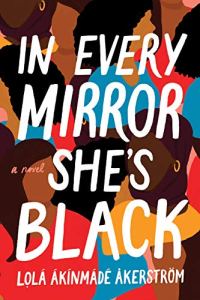
In Every Mirror She’s Black by Lola Akinmade Akerstrom
Sourcebooks Landmark, September 2021. 405 pg.
Three Black women are linked to a wealthy and influential white man in Stockholm. Kemi Adeyemi, a successful marketing executive, is hired by Johnny Van Lundin. Flight attendant Brittany-Rae Johnson meets Johnny on a flight and he pursues her even though she’s living with a longterm boyfriend. Muna is a refugee from Somalia who gets a job cleaning offices at Johnny’s company. They’re all navigating in a white world. Told from multiple perspectives, this novel addresses racism, classism, fetishism, tokenism.
The Last One by Fatima Daas
Other Press, November 2021. 193 pg.
“I hate everything that has to do with the female universe as my mother presents it to me, but I haven’t realized it yet.”
A very personal coming-of-age novel based on the author’s experiences as a young French lesbian and Muslim. The author uses her own name, Fatima Daas, for the central character. The daughter of religious Algerian immigrants who consider love and sexuality taboo, Fatima struggles to justify her sexuality alongside her religious beliefs as she becomes more independent. It’s written in a unique style and reads most like a memoir. It’s difficult to know where fiction ends and reality begins. It’s an interesting way to write a novel.
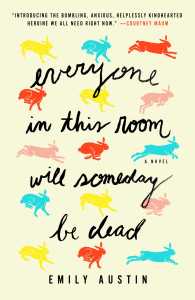
Everyone in This Room Will Someday Be Dead by Emily Austin
Atria Books, July 2021. 256 pg.
“I can’t get a pet because one day it would die, and I doubt I’d recover.”
Gilda is rather fixated on death. It’s all the 20-something can think about. She struggles with depression and anxiety. After losing her bookstore job, she wanders into a church after seeing a flier for mental health support, and winds up with a job. It’s an interesting place for her to work as she’s not too convinced about the existence of any deity. She’s found herself to be out of place most of the time. It’s thoughtful, relatable and filled with dark humor.
Backlist titles:
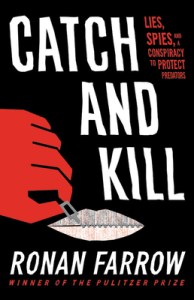
Catch & Kill by Ronan Farrow
Little, Brown and Company, 2019. 608 pg.
Pulitzer-prize winning journalist Ronan Farrow recounts breaking the story on the seuxal assault and harassment allegations against Harvey Weinstein. I listened to the audiobook which I don’t often do for nonfiction that’s this long and dense. Being extremely engaging and affable, Farrow tells good stories. It’s detailed and descriptive and takes you right there into the conspiracies, power and patriarchal constructs.

Writers & Lovers by Lily King
Grove Press, 2020. 320 pg.
Grieving the death of her mother and the end of a relationship, a struggling writer, Casey Peabody, moves to Cambridge, Massachusetts. She lives in a garage apartment and makes ends meet waiting tables while working on a novel.She soon leaves her waitress job for a higher paying job with benefits. She’s able to see a doctor for the first time in five years. She receives several startling diagnoses. She starts dating two guys– the hot guy whose kisses make her “melt” and the older widowed writer with two children. A loan collection agency threatens to garnish her wages. As a child, she was a golf prodigy and earned a scholarship to Duke. Then she found her coach father spying on girls in the locker room. Her mother recently died of cancer and she worries about getting cancer herself. She finally finishes her book and sends it out to agents. I love books about writing and writers. I found this relatable, smart and engaging. It’s a novel about creativity, loss, persistence, independence and pursuing one’s goals.
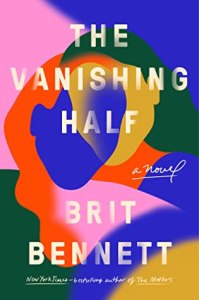
The Vanishing Half by Brit Bennett
Riverhead, 2020. 343 pg.
“She hadn’t adopted a disguise or even a new name. She’d walked in a colored girl and left a white one. She had become white only because everyone thought she was.”
The Vignes sisters are identical twins. At 16, they ran away from home. Now, years later, one lives in the same Southern town they grew up in and one lives in California and passes as white. The novel covers the 1940s-1950s. It’s brilliant, provocative, insightful, riveting. Absolute perfection in addressing race, gender, identity, belonging, genetics, ancestry, nature vs. nurture and independence. The story and characters stay with you for a long time.
book review: Band of Sisters
Posted by Amy Steele in Books on March 2, 2021
 Band of Sisters by Lauren Willig. William Morrow| March 2, 2021| 519 pages | $27.99| ISBN: 9780062986153
Band of Sisters by Lauren Willig. William Morrow| March 2, 2021| 519 pages | $27.99| ISBN: 9780062986153
RATING: 4/5*
Based on actual events during WWI, a group of Smith College alumnae formed the Smith College Relief Unit and traveled to northern France to assist in civilian relief work in 1917. They traveled around delivering supplies, providing medical aid and educating school children in decimated villages. Since she can speak French and drive, Kate Moran, a scholarship student, gets recruited by her friend Emmie Van Alden. Kate leaves her job as a teacher and joins 17 other Smith women, including two doctors.
“Debutante nonsense, her mother called it. Good enough for those who didn’t have to worry about getting their living.
But this was work too. She might not be paid for it, not exactly, but the Unit was covering her room and board, and how else was she ever to see France, even France at war?”
Emmie Van Alden comes from a wealthy family and doesn’t need to earn a living. The unit’s mostly composed of privileged women. They could’ve stayed safe in the United States but they chose to help with war efforts and that’s to be commended. The unit leader, Mrs. Rutherford, provides some statistics: “In the little over a week that we’ve been here, Miss Van Alden alone has already made fifty-one calls on forty-two families.” She also noted that the medical department had seen nearly three hundred patients.
Throughout the novel, Kate struggles with confidence, belonging and feeling like an outsider. She even overhears another woman commenting that she didn’t know that there were any Catholics at Smith. However, she’s extremely focused and efficient and even becomes the assistant director of the unit for a while. However, when Kate finds out that Emmie’s family is paying her room and board, it draws another rift in their tenuous relationship. Later she finds out that Emmie’s cousin, Julia, one of the doctors on the excursion, comes from a poor family as well. To Emmie’s dismay, Julia and Kate become close, making Emmie feel like the odd one out. There’s a lot going on in this novel.
“She’d thought they’d been happy at Smith. It had seemed to work then. Emmie provided all the affection and Kate provided the practical skills, and between them, they balanced out rather nicely.”
The unit faces more challenges than anticipated once they reach their post in Grecourt. There’s constant shelling from the Germans, threats to be ousted by the British army and French bureaucracy. Villagers suffer from pneumonia, measles, tetanus, syphilis. One night, Kate and Emmie run out of gas and get lost in a snowstorm and are nearly sexually assaulted by some soldiers. The women in the unit prevail despite undermining, mistreatment and discouragement by men. There’s some romance mixed in, too. There aren’t that many women around France at this time and men come for dinner parties every week. Emmie flirts and falls in love with British Captain Will DeWitt (of the DeWitt biscuits!). He tells her that he’ll propose to her after the war ends.
I’d not heard of the Smith College Relief Unit before discovering this book. I’m a women’s college graduate (Simmons College ‘91) so this particularly appealed to me. Author Lauren Willig completed meticulous research straight from the source at Smith College Special Collections. She pored over letters, journals, reports and photos. There are still so many stories one can cull from historical documents. It’s fascinating. I’ve not read a lot of books based in WWI so I appreciated that as well. This is why I love to read historical fiction. I learn about events I didn’t know that much about and am transported to different times and historical moments in a creative, accesible and memorable manner. While the book dragged a little bit at times and might have been too long, I overall enjoyed reading about these brave, determined women. They must have been forever bonded by their remarkable experience during WWI.
Band of Sisters is the perfect novel to read during Women’s History Month.
BEST TV 2020
Posted by Amy Steele in TV on January 25, 2021
As we hunkered down for quarantine in March 2020, there were at least plenty of great television series to watch. Like many others, I binge-watched The Queen’s Gambit and Bridgerton– riveting shows for very different reasons. I appreciate interesting documentary series like Lenox Hill. I also found several other shows worth watching. These are the ones I consider to be the best.
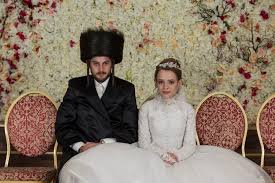 Unorthodox— this show about a Jewish woman, Etsy, escaping her Orthodox marriage and community to live a life abroad is fascinating and riveting. It’s a moving story based on a memoir by Deborah Feldman. The brilliant script and acting makes it especially compelling. Much of the series is in Yiddish and it really doesn’t matter as it’s a universal sentiment expressed throughout the series.
Unorthodox— this show about a Jewish woman, Etsy, escaping her Orthodox marriage and community to live a life abroad is fascinating and riveting. It’s a moving story based on a memoir by Deborah Feldman. The brilliant script and acting makes it especially compelling. Much of the series is in Yiddish and it really doesn’t matter as it’s a universal sentiment expressed throughout the series.
Mrs. America— Conservative activist and anti-feminist Phyllis Schlafly leads a fight against the ratification of the Equal Rights Amendment in the 1970s. We see feminist icons Gloria Steinem, Shirley Chisholm, Bella Azbug, Betty Friedan, and others campaigning for the ERA. Stellar cast with Cate Blanchett as Schlafly, Rose Byrne as Steinem, Uzo Aduba as Chisholm, Margo Martindale as Azbug and Tracey Ullman as Friedan.
Lenox Hill— documentary that follows four doctors– two brain surgeons, an emergency room physician and an OBGYN– as they practice at Lenox Hill Hospital in New York City. I worked in healthcare and had considered a career in nursing so I’m particularly interested in medical documentaries and dramas.
Stateless— Inspired by actual events, it focuses on the intersecting lives of four people at an immigration detention center in Australia: a flight attendant escaping a cult, an Afghan refugee seeking asylum, a young Australian father in a dead-end job and a stressed bureaucrat caught up in a national scandal. Difficult to watch at times, it addresses many international issues including humane treatment of refugees and mental illness.
Mrs. Fletcher— I LOVED THIS NOVEL (by Tom Perrotta) and loved the series too. Mrs. Fletcher is a single mom and recent empty-nester as her son heads off to college. The senior center director turns to porn and a writing class to fill the void. It’s amusing, raw, provocative and endearing with a solid cast of characters. Kathyrn Hahn is fabulous.
The Queen’s Gambit— what can I say about this brilliant show that’s not already been said? Who knew chess could be so thrilling and stylish?
The Flight Attendant— When I read this novel a few years ago when it first came out, I liked it but also found it confusing and did not like the ending at all. The series is fantastic. Kaley Cuoco is fresh, energetic, extremely appealing and vulnerable as Cassie, the flight attendant with a drinking issue, who wakes up in a hotel next to a dead man with no idea what happened. Zosia Mamet shines as Cassie’s no-nonsense attorney best friend. Can’t say much more without giving anything away.
Bridgerton— I know everyone’s watching this and loves it. Gorgeous scenery, costumes and cast– it’s Gossip Girl (which I haven’t seen all that much of) meets Downton Abbey and Pride and Prejudice. I haven’t read the romance novels on which the series is based but I’ve put in a request to my library (there’s a waitlist as I’m not the only one curious).
BEST BOOKS OF 2020
Posted by Amy Steele in Books on January 4, 2021
I read 87 books this year– 84 by women; three by men; 32 by BIPOC authors. The shortest book I read was Intimations by Zadie Smith. The longest book I read was Goldfinch by Donna Tartt. Here are the best books (5/5*) that were published in 2020 that I read.
Intimations by Zadie Smith
Penguin Books, July 2020. 97 pg.
A slim collection of essays–about aging, community, race, COVID 19, writing– that Zadie Smith wrote during the pandemic. There’s much to consider within these pages of thoughtful, personal and universal essays. She explains: “Talking to yourself can be useful. And writing means being overheard.”
 Weather by Jenny Offill
Weather by Jenny Offill
Knopf, February 2020. 207 pg.
fantastic, creative and timely novel addressing the current climate crisis and the impending apocalypse. it’s from the point-of-view of a middle-aged woman –so definitely relatable to me (I want to read more novels about older women). She’s married and has a son. Her brother is a recovering drug addict and she’s had to care for him throughout the years. Jenny Offill excels at this observational narrative. It’s short, riveting, potent. It’s really the perfect thing to read during this COVID-19 pandemic and quarantine we’re all experiencing. Plus it’s quite relatable to middle-aged spinster GenX me: “The woman has just turned fifty. She tells me about her blurriness, the way she is hardly seen. She supposes she is not so pretty anymore–fattish, hair a bit gray. What she has noticed, what gives her a little chill, she tells me, is how if she meets a man out of the context of work, he finds her to not be worth much. He looks over her shoulder as he talks or pawns her off on a woman her own age.”
 The Exiles by Christina Baker Kline
The Exiles by Christina Baker Kline
Custom House, August 2020. 370 pg.
I loved this amazing work of historical fiction so much and don’t know why I waited so long to write about it! It covers an intriguing aspect of history that I’ve not read much about. Based on actual events, the novel focuses on a ship of female convicts traveling from England to Van Diemen’s Land (Tasmania) in the 1850s. Although Aboriginal people have occupied Australia for thousands of years, the British government views the native people as nuisances and the land to be uninhabited and available for their use. It’s amazing to think about some of the low level crimes for which many were sentenced as well as the harrowing passage. “Evangeline recalled seeing small items in the newspaper over the years about the incorrigibles– men, she thought– transported on convict ships to Australia. Murderers and other deviants exiled to the far side of the earth, ridding the British Isles of the worst of its criminals.” Evangeline is a governess accused of stealing a ring which had been given to her by the family’s older son with whom she’d become romantically involved. She’s well-educated and her late father was a minister. The other staff members didn’t like her. “She was, by temperament, much like her father: diffident, with a shyness often mistaken for aloofness, a bookishness perceived as snobbery.” She’s sentenced to 14 years in prison. She’s pregnant and gives birth to a daughter onboard. Sadly she’s thrown overboard by a crew member who she’d stabbed to protect Hazel, who he’d been sexually assaulting. Hazel is a scrappy convict whose midwife mother taught her many potions and remedies. Mathinna is a native woman who knows how to read and learns to speak French. She’s taken from her tribe by Van Diemen’s governor’s wife on a whim. She considers her a project. It doesn’t work out well. The novel’s a complete page turner and I became so invested in these women I didn’t want it to end.
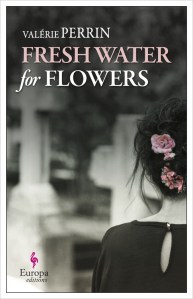 Fresh Water for Flowers by Valerie Perrin
Fresh Water for Flowers by Valerie Perrin
Europa, June 2020. 476 pg.
“My closest neighbors don’t quake in their boots. They have no worries, don’t fall in love, don’t bite their nails, don’t believe in chance, make no promises, or noise, don’t have social security, don’t cry, don’t search for their keys, their glasses, the remote control, their children, happiness.”
I walk in cemeteries fairly often. There’s one in my neighborhood. When I was in grad school, I would drive to the Arlington National Cemetery to take walks through it. I liked the quiet and solitude. I sometimes wonder about the people whose names I see on gravestones. Violette Toussaint is a cemetery caretaker in the small French town Bourgogne. She lives on site. She takes notes on everyone who’s buried there. She’s close friends with three gravediggers, three groundskeepers and a priest. She feeds the stray cats that roam the cemetery. She reads. She bakes. It sounded fairly idyllic to me. I love the writing and this character. Violette is different, interesting, smart, thoughtful. I found myself deeply connected to her– “I don’t fit into boxes. I’ve never fit into boxes. When I do a test in a women’s magazine– “Get to know yourself,” or “Know yourself better”–there’s no clear result for me. I’m always a bit of everything.” I don’t fit in boxes either.
“I’m not after a love story. I’m too old for that. I’ve missed the boat. My meager love life is an old pair of socks shoved to the back of the closet.”
Julian Sole, a police detective, arrives one day and tells Violette that his mother wanted her ashes spread on someone’s grave who wasn’t her husband. He wants to know why. Violette reflects on her own husband who had numerous affairs and left her. She recalls: “He turned our bed into a paradise, was considerate and sensual when making love, but as soon as he got up, was vertical, left our horizontal love behind, he lost a good deal of color. He had nothing to say, and was interested only in his motorbike and video games.” Violette’s mother abandoned her and she was pregnant at 18. Drawn to each other, Violette and Julian spend more time together as they help reconcile the past. There are more secrets of the dead and the past revealed but I can’t give too much away or I’d ruin it. The novel unwinds with several twists. It’s smart, funny and dark. Just what I like. It’s a full reflection on life and death and everything involved.
Julian Sole, a police detective, arrives one day and tells Violette that his mother wanted her ashes spread on someone’s grave who wasn’t her husband. He wants to know why. Violette reflects on her own husband who had numerous affairs and left her. She recalls: “He turned our bed into a paradise, was considerate and sensual when making love, but as soon as he got up, was vertical, left our horizontal love behind, he lost a good deal of color. He had nothing to say, and was interested only in his motorbike and video games.” Violette’s mother abandoned her and she was pregnant at 18. There are more secrets of the dead and the past revealed but I can’t give too much away or I’d ruin it. The novel unwinds with several twists. It’s smart, funny and dark. Just what I like. It’s a full reflection on life and death and everything involved.
 My Dark Vanessa by Kate Elizabeth Russell
My Dark Vanessa by Kate Elizabeth Russell
William Morrow, March 2020. 373 pg.
A 42-year-old English teacher at a prep school in Maine grooms then rapes his 15-year-old student. Although it’s a story that ‘s been told numerous times, it’s a remarkably strong perspective that’s completely engrossing. The story alternates between 2000 and 2017 where adult Vanessa finds herself finally recognizing the level of abuse and how it’s affected her. I have a memory from high school of being in gym class and one of my classmates going up to a (very attractive) teacher and unbuttoning a button on his shirt and commenting something about the full buttoned up style. It was so bold. That was how this popular student commanded attention. I didn’t even kiss a boy until college. Vanessa is incredibly naïve as a student: “It wasn’t about how young I was, not for him. Above everything else, he loved my mind. He said I had genius-level emotional intelligence and that I wrote like a prodigy, that he could talk to me, confide in me. Lurking deep within me, he said, was a dark romanticism, the same kind he saw within himself. No one had ever understood that dark part of him until I came along.” Vanessa writes poetry. Mr.. Strane gives her Sylvia Plath, Emily Dickinson, Edna St. Vincent Millay to read and then he gives her Lolita. As an adult, Vanessa recognizes: “I still feel different from others, dark and deeply bad, same as I did at fifteen, but I’ve tried to gain a better understanding of the reasons. I”ve become an expert on the age-gap trope, consuming books, films, anything featuring a romance between an adult and legal child. I search endlessly for myself but never find anything truly accurate.” She’s also finding it difficult to have relationships with me. She notes: “There are men who never turn into boyfriends, who peer behind the curtain and see the mess of me–literal and figurative: the apartment with a narrow path through the clothes and trash leading from bed to bathroom; the drinking, endless drinking; the blackout sex and nightmares.”
 Afterlife by Julia Alvarez
Afterlife by Julia Alvarez
Algonquin, April 2020. 256 pg.
Antonia is a recently widowed, retired English teacher who lives in Vermont. One night she arrives home to find an undocumented pregnant teenager on her doorstep. Then, her sister, who suffers with Bipolar disorder, goes missing. “You’re the most American of us, her sisters have commented to Antonia in an accusatory tone. Just saying, they said smugly when she asked what was wrong with being whoever she was. Admittedly, she was the worrier, the insomniac, the most anxious and disciplined of the sisters.” Through gorgeous prose and astute observations, Julia Avarez examines a woman’s struggles to maintain her individual identity as well as to navigate relationships with her three sisters and her immigrant community.
 The Book of V by Anna Solomon
The Book of V by Anna Solomon
Henry Holt & Company, May 2020, 320 pg.
I gasped excitedly when I walked into the break room at my bookstore job and saw the ARC of this novel. I tore through this book in two days. Leaving Lucy Pear is one of my favorite novels and now after reading this I’ll count Anna Solomon as a favorite author. This novel focuses on three Jewish women– Lily is a mother, second wife and writer in 2016. Vivian is a political wife during the Watergate-era. Esther is an independent woman in ancient Persia. They’re all strong, independent-minded women. and Solomon fully explores each character’s motivations, desires, needs, struggles, commonalities and connections across the centuries.
 The Sweet Indifference of the World by Peter Stamm
The Sweet Indifference of the World by Peter Stamm
Other Press, January 2020. 160 pg.
I only read one book by a white male author and this is it. I have a handful of favorite cis white male authors and Peter Stamm counts as one of them. I read them immediately. I appreciate his gorgeous, melancholy writing. This one is short and interesting– a writer, Christoph, meets a woman, Lena, who is the doppelganger of his former lover, Magdalena, who inspired his first novel post breakup. Lena recognizes her own relationship with a writer named Chris in the story she’s told. This one blurs past and present, fiction and reality. How much does reality influence fiction and fiction influence reality? He comments: “With youthful pathos, I had believed I had to decide between her and my writing, between freedom and love. Only now did I understand that love and freedom were not mutually exclusive, but mutually entailed: the one wasn’t possible without the other.”
BOOK REVIEW: Perfect Tunes
Posted by Amy Steele in Books on November 23, 2020
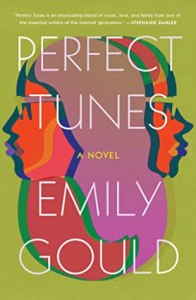 Perfect Tunes by Emily Gould. Avid Reader Press| April 2020| 272 pages| $26.00| ISBN: 978-1-5011-9749-9
Perfect Tunes by Emily Gould. Avid Reader Press| April 2020| 272 pages| $26.00| ISBN: 978-1-5011-9749-9
RATING: 3.5 /5*
Laura, an aspiring singer/songwriter from Ohio, moves to New York to share an apartment with Callie, her best friend from high school. Despite her plans to avoid dating, Laura ends up falling in love with the bass player in an up-and-coming band. Turns out she’s more into him than he is with her: “Laura fought back the urge, again, to tell him that she loved him, to claim him officially somehow. The thought of him with random girls in different cities made her want to peel off her skin. She wished that they were married. She wanted everyone he met to know they were together. There was no possible way to express any of this to him.” It turns out that Laura wants to be independent and successful on her own merits but also wants to be in a relationship. Which, of course, is possible. It just isn’t possible with this guy. She’s a people pleaser and I almost cringed at the part where she’s over there cooking dinner for Dylan and his roommate/bandmate. I had a crush on a guy in a band one time and would walk his dog for him several times a week thinking that would make him more interested in me. Foolishness that I can’t say I didn’t repeat.
Dylan enjoys the attention and frenetic lifestyle associated with being in a band and touring. Laura and Callie form a band that opens for Dylan’s band and has some potential due to Laura’s songwriting prowess. Dylan’s a troubled soul struggling with a mood disorder and addiction. Sadly relatable: “He was swaying and slurring as he said this. Laura understood, without wanting to, that Dylan was much more interested in getting fucked up than he was in having sex with her.” The short-lived romance ends in tragedy and a life-changing pregnancy for Laura. She ultimately chooses her daughter over her career and her friend Callie ends up with a successful music career; maybe the one that Laura initially wanted.
Divided into three parts, the novel focuses on Laura’s early years in New York, Laura being a young mother and then on Laura’s teenage daughter Marie and her desire to learn about her biological father. As I’ve worked in the music business and have followed bands and dated musicians and experienced unrequited love (too often), I could completely relate to Laura’s early experiences in New York. I lost a bit of interest in the motherhood part. I wanted more details and focus on Laura’s songwriting. The title suggested as much and I expected more. Despite its pivot from singer/songwriter to motherhood, it’s a mostly enjoyable, quick read. Although I was disappointed, I still kept reading which attests to Emily Gould’s writing talents. I’ll try another one of her novels.
book review: With or Without You
Posted by Amy Steele in Books on August 19, 2020
With or Without You by Caroline Leavitt. Algonquin| August 4, 2020| 288 pages | $26.95| ISBN: 9781616207793
RATING: ****/5*
The way you expect your life to be isn’t often the way it ends up being. Societal pressures and outside influences affect decision-making. People change over time and sometimes love relationships don’t work anymore or just don’t fit. Why do some people languish in relationships that aren’t particularly satisfying anymore? When do you just let go of a relationship, even if you’ve been in it for a substantial amount of time?
Stella and Simon, both 42, live in New York, have been together for 20 years and don’t have any children. An RN, Stella wants a stability and a family. Simon, a musician, still dreams of success and fame in the music industry. Stella and Simon have different personalities and demeanors. Stella is strong, independent, organized, goal-oriented. Simon is laid back and not super responsible. He lives the musician lifestyle— he’s laid back and frequently takes drugs.
“She had given up things for him before. After their first year together, she’d left her job as an RN because it was so exciting to travel with him. And then being on the road got old, or maybe just she did. But by the end of her second year touring with him, she began to feel the need to be a nurse again. It was like a physical pull. She missed having a community of doctors, nurses, and staff that she saw every day.”
It had almost been out of character for Stella to fall in love with Simon— “He came over to see her the next night, and the next, and suddenly there she was, responsible Stella with both feet firmly planted, Stella who never missed a shift, who read books and adored classical music, falling heedlessly for a rocker with an impulsive lifestyle and a way with words, simply because he cared so much about her, Iike no one ever had before.”
As someone who has tried to make relationships work with people who don’t have the same values as me or who don’t have a compatible personality or aren’t going to learn and grow over the years, I found myself deeply connected with this novel. As a music journalist I’ve had many encounters with musicians. I understand the charisma and the draw involved. Someone you might not look at on the street becomes 10x more attractive on stage playing an instrument and/or singing. As a middle-aged woman, I completely comprehend wondering how time flew by and why aren’t I more fulfilled in my life?
On the eve of the start a tour that he hopes will catapult his stagnant music career, Simon convinces Stella to take drugs with him and she falls into a coma for two months. Simon can’t make it out on tour and his band mates find a replacement. He doesn’t know what to do with himself now that he’s no longer in a band. The coma completely transforms Stella. She’s now an artist with a remarkable ability to draw portraits in which she’s able to capture a person’s innermost desires and feelings. While Stella was in the coma, Simon got close to Stella’s best friend. Do Stella and Simon choose loyalty or independence?
At turns melancholy, amusing, relatable and infuriating, With or Without You is a thoughtful novel about choices, identity, self-worth in relationships and careers and remaining true to yourself. It’s about questioning everything that makes you happy and what you should do vs. what truly fulfills you. It’s a complex and unique read.
book review: The Sea of Lost Girls
Posted by Amy Steele in Books on May 2, 2020
The Sea of Lost Girls by Carol Goodman. William Morrow| March 3, 2020| 304 pages | $16.99| ISBN: 9780062852021
RATING: ****/5*
“For all the town’s fascination with its dark history–the Indian massacres and early colony, the influenza epidemic and lost girls– those stores are meant to be part of the past, told on candlelit ghost tours or sold in glossy paperbacks to be read on rainy weekends the lost girls aren’t meant to come back.
But here I am.”
I tore through this mystery/thriller!
Tess teaches at Haywood Academy, a boarding school in Vermont, and her husband, Harmon, is head of the history department. Her 17-year-old son, Rudy, struggles with dark moods and anger. He doesn’t know much about his birth father. His mother wont reveal all that much about him.
Tess got pregnant when she herself was a student at Haywood. One night, Rudy’s girlfriend, Lila, is found dead on the beach. Was it an accident or murder? Did Rudy kill her? Turns out Lila was writing a paper about a missing girl from many decades ago and her connection to Haywood. Is history repeating?
Family secrets get exposed and there are multiple suspects in Lila’s death. Haywood school has a long entrenched history of unsolved cases involving missing girls. The novel revolves around the standard trope of a teacher-student relationship with numerous twists that I definitely didn’t see coming.
I really like school settings, particularly private schools. Privilege, power, youthful insecurities, New England myths and legends, local townspeople provide plenty of drama.
Has anyone heard of the Bennington Triangle? That served as inspiration for author Carol Goodman. I don’t listen to true crime podcasts so I hadn’t heard of it even though I live in Massachusetts and spent many family vacations in Vermont in my youth. I’m now going to find a podcast!
–review by Amy Steele
I received a review copy from William Morrow.
book review: Agnes
Posted by Amy Steele in Books on November 4, 2019
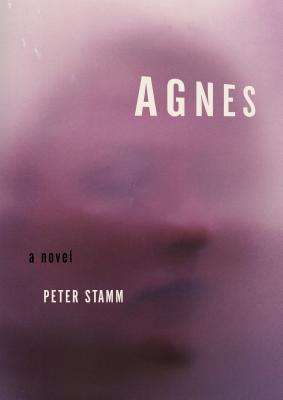 Agnes by Peter Stamm. Other Press| September 2019| 160 pages | $14.99| ISBN: 9781590511534
Agnes by Peter Stamm. Other Press| September 2019| 160 pages | $14.99| ISBN: 9781590511534
RATING: ****/5*
Agnes is the story of a romance. A writer writes the story of his relationship with Agnes, a PhD candidate. It becomes unclear what’s real and what’s fiction. Life completely imitates art. He writes: “In my head, our relationship was already much further advanced than it was in reality. I was already wondering about her, beginning to have my doubts, though we hadn’t even been out together.” Soon enough his writing changes the relationship as Agnes follows in the footsteps of her fictional counterpart. The author crafts exactly what he wants to happen. It’s the power of the pen in full. If he wanted her to dress a certain way for an upcoming event, he’d write about it.
He writes: “Now Agnes was my creation. I felt the new freedom lend wings to my imagination. I planned her future for her, the way a father would plan his daughter’s.” Do they really care about each other or is this writing now solely interested in writing the perfect character and story? Writers possess the power to change circumstances and create narratives. The writer begins to become more focused on writing about the relationship than actually being in the relationship. He writes: “I wasn’t daydreaming. I was fully in control, and everything I thought to myself instantly became real. It was a feeling like walking along a narrow gorge that I couldn’t leave. And if I tried to, I felt a kind of resistance, the presence of another will, some sort of elastic fetters that kept me from setting off in the wrong direction.” It’s an intriguing concept and beautifully written in this short, strong novel.
review by Amy Steele
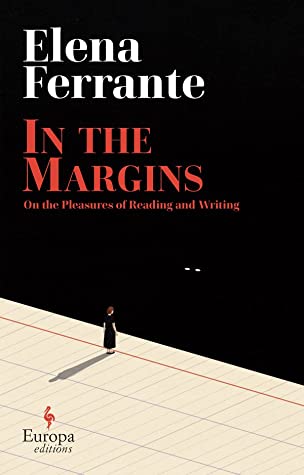

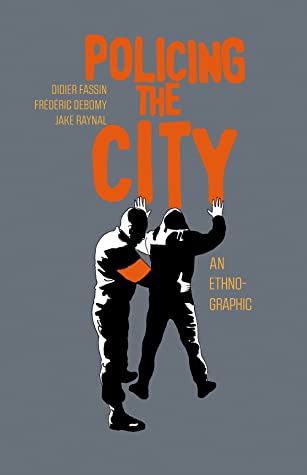
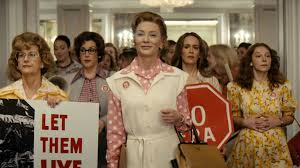

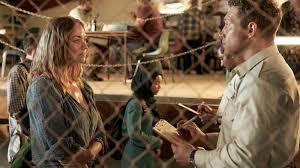


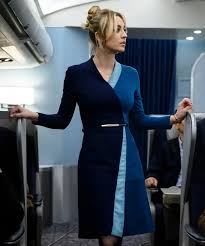
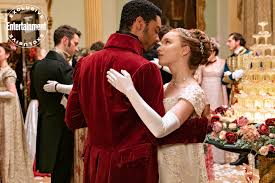

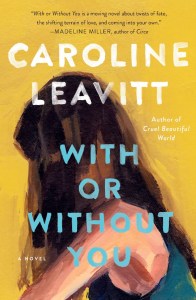
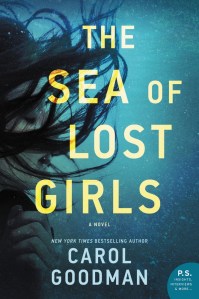





You must be logged in to post a comment.